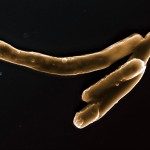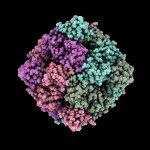Lien vers Pubmed [PMID] – 22880126
PLoS ONE 2012;7(8):e42876
BACKGROUND: The Mycobacterium tuberculosis PhoP/PhoR two-component signal transduction system controls the expression of about 2% of the genome and plays a major role in pathogenicity. However, its regulon has not been well characterized.
METHODOLOGY/PRINCIPAL FINDINGS: The binding site of PhoP transcription regulator was identified in the upstream regions of msl3, pks2, lipF and fadD21 genes, by using gene fusions, electrophoretic mobility shift assays and DNase I footprinting experiments. A consensus sequence for PhoP binding was deduced. It consists of two direct repeats, DR1/DR2, associated with a third repeat, DR3, important in some cases for PhoP binding to DR1/DR2 but located at a variable distance from these direct repeats. DR1/DR2 and DR3 consensus sequences were used to screen the whole-genome sequence for other putative binding sites potentially corresponding to genes directly regulated by PhoP. The identified 87 genes, encoding transcription regulators, and proteins involved in secondary metabolites biosynthesis, transport and catabolism are proposed to belong to the PhoP regulon.
CONCLUSIONS/SIGNIFICANCE: A consensus sequence derived from the analysis of PhoP binding to four gene promoter regions is proposed. We show for the first time the involvement of a third direct repeat motif in this binding reaction. The consensus sequence was instrumented to study the global regulation mediated by PhoP in M. tuberculosis. This analysis leads to the identification of several genes that are potentially regulated by this key player.






